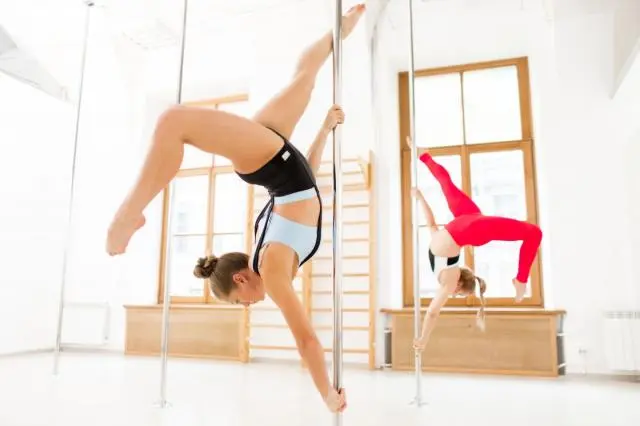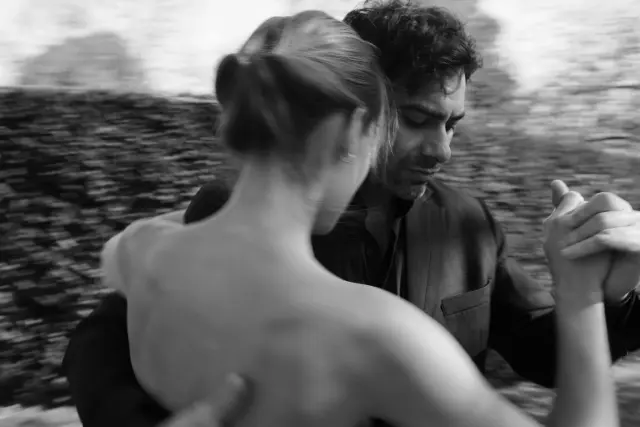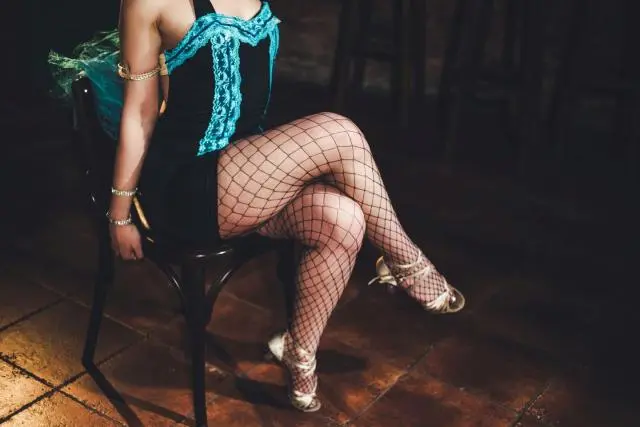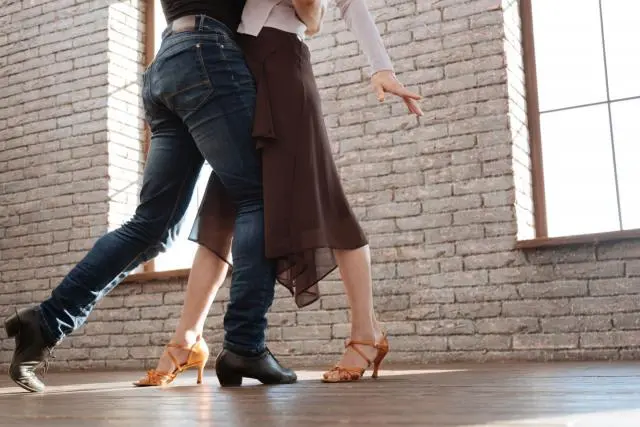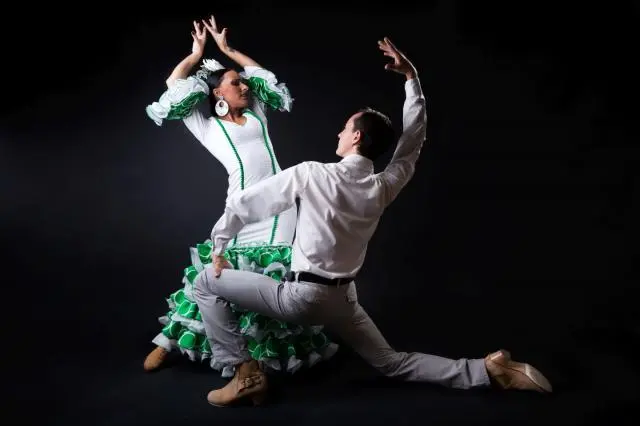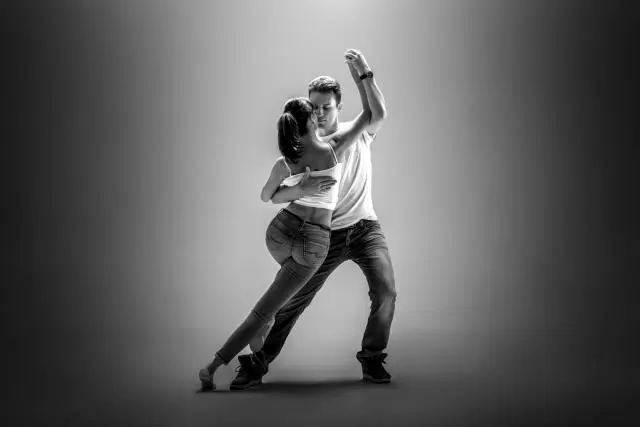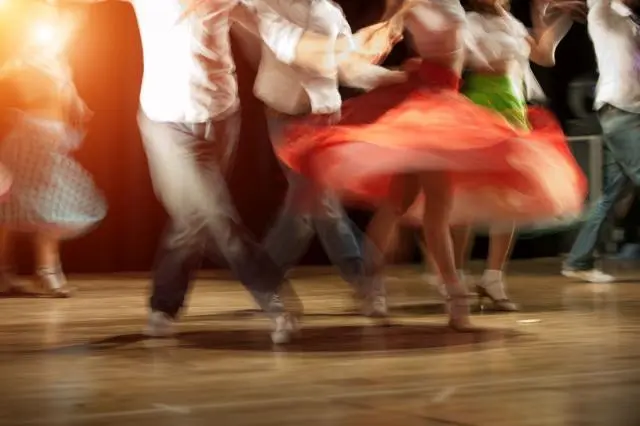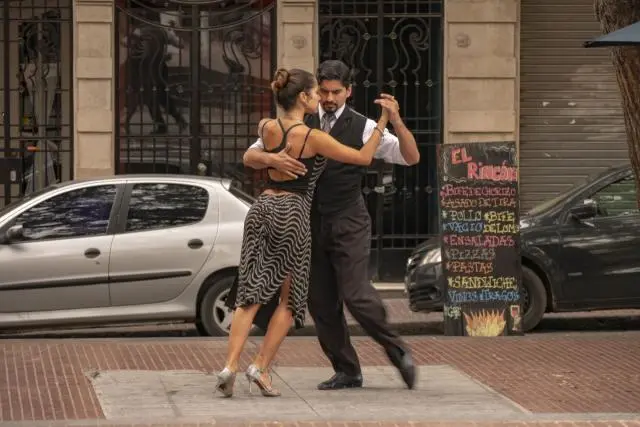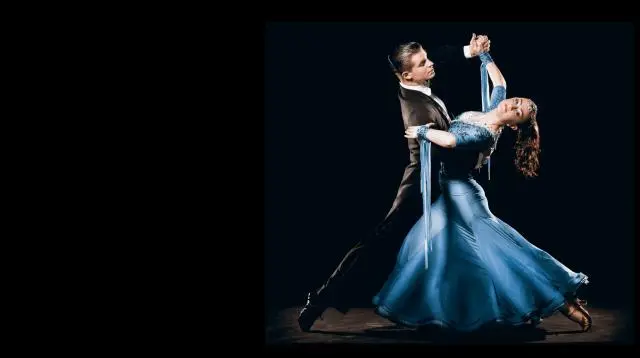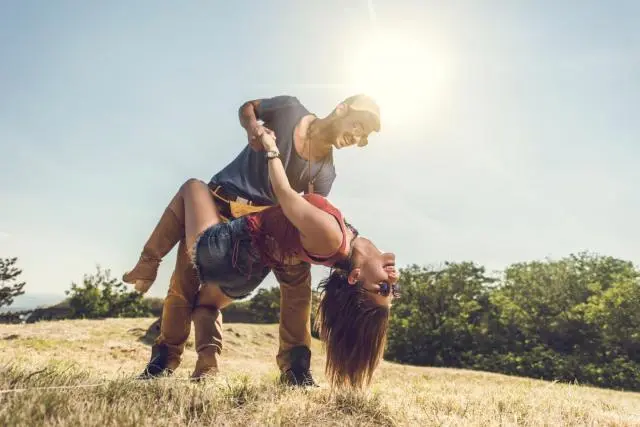
What you need to know about Foxtrot
The Foxtrot - a dance for the world
This dance originated in North America between 1910 and 1915. At that time, the Foxtrot was a mixture of Onestepp, Twostepp, and Ragtime. It might be named after an actor named Garry Fox, who ran a vaudeville and combined the dance steps of Onestepp and Castle Walk. After World War I, the Foxtrot came to Europe in the form we know it today. Anyone who has ever attended a dance school or participated in a prom knows this dance. Due to its simple step sequence and the fact that no figures or postures are required, it is possibly the most danced dance in Europe. Although it has been included in the world dance program since 1963, it has never been danced in competitions.
History of origin
The foxtrot is a smooth, progressive dance characterized by long, continuous flowing movements across the dance floor. It is danced to big band (usually vocal) music. The dance is similar in its look to waltz, although the rhythm is in a 4 4 time signature instead of 3 4. The dance was premiered in 1914 by Vaudeville actor Harry Fox, and it is believed to be named after him. At its inception, the foxtrot was originally danced to ragtime. From the late 1910s through the 1940s, the foxtrot was the most popular fast dance, and the vast majority of records issued during these years were foxtrots. The waltz and tango, while popular, never overtook it. Even the popularity of the Lindy hop in the 1940s did not affect the foxtrot's popularity, since it could be danced to the same records used to accompany the Lindy hop.
Dance styles
-
Social Foxtrot: Social Foxtrot, also known as Rhythm Foxtrot, is a simplified version of the original Foxtrot dance. It is a ballroom dance that is easy to learn and is suitable for beginners. Social Foxtrot is danced to a wide range of music, including blues, quickstep, tango, rock and roll, and even some current chart music. It is a slow progressive dance that moves clockwise around the room, with the man facing the wall. The basic steps of Social Foxtrot are side-close, two walks back, side-close, and repeat. The dance is characterized by smooth and flowing movements, and it is typically danced in a normal closed position, which means facing your partner and holding them close.
-
American Style Foxtrot: The American Style Foxtrot is a variation of the original Foxtrot dance that has evolved into a distinct style. It is a smooth and progressive dance characterized by long, continuous flowing movements across the dance floor. The American Style Foxtrot is known for its elegance and poise, and it is typically danced to big band music. The dance features a wide and extended dance hold that allows the dancers to travel across the floor and navigate smoothly. The American Style Foxtrot has firmly established itself as a beloved and iconic ballroom dance, enchanting both performers and spectators with its graceful movements and timeless charm. It is a versatile dance style that is suitable for both social environments and dance competitions, showcasing technical finesse and cultural impact.
-
International Style Foxtrot: The International Style Foxtrot is one of the five Standard dances that form the backbone of International Style Dance competitions held around the world. It is a tightly defined dance style with instructional and competitive syllabi that are tightly controlled by the Imperial Society of its local affiliates and other organizations. The International Style Foxtrot is characterized by its smooth and sleek expression, with the couple maintaining contact throughout the dance. It features a specific set of figures, including the Three Step, Feather Step, Natural Turn, Reverse Turn, Closed Impetus, Feather Finish, Natural Weave, and others.
-
Argentine Foxtrot: Argentine Foxtrot is a fusion of traditional Foxtrot with elements of Argentine Tango, resulting in a dynamic and passionate dance style that combines the elegance of Foxtrot with the intricate footwork and improvisational nature of Tango. Argentine Foxtrot features close embrace, syncopated rhythms, and playful embellishments, creating a captivating and expressive dance experience for both dancers and spectators.
-
Show Foxtrot: Show Foxtrot is a theatrical and highly stylized variation of the dance that is often performed in stage productions, cabarets, and dance showcases. It incorporates elements of jazz, theater dance, and musical theater, allowing dancers to showcase their technical skill, creativity, and stage presence. Show Foxtrot can feature elaborate choreography, dramatic lifts, and theatrical flourishes, making it a visually stunning and entertaining spectacle.
How is Foxtrot danced?
The foxtrot is a smooth, elegant, and easy-to-learn dance that is popular at a wide variety of social events, including wedding receptions. It is characterized by long, flowing movements and is typically danced to big band music. The dance is highly versatile and can be danced to a variety of musical styles and tempos, from slow and romantic to quick and jazzy. The basic steps of the foxtrot are easy to understand and can be learned with no prior experience. The dance is typically danced in a normal closed position, which means facing your partner and holding them close. The foxtrot is a traveling dance style that features big strides and graceful turns, and it is typically danced in a 4/4 time signature. Dancers maintain a wide and extended dance hold that helps them travel across the floor and navigate smoothly. The foxtrot has evolved into several different styles, including the American Style Foxtrot, the International Style Slow Foxtrot, and the Quickstep. It is a beloved dance style, known for its graceful steps and cultural impact
What is the beat of Foxtrot?
The foxtrot is typically danced in a 4/4 time signature, which means that there are four beats in each measure of music. The basic steps of the foxtrot can be counted as "slow, quick, quick" or "quick, quick, slow" or even "quick, quick, quick, quick" depending on the figure. When counted in slows and quicks, a "slow" represents two beats, and a "quick" represents a single beat. The music for the foxtrot can vary from peppy and pop-like to smooth and flowy, and it is typically played in a big band style. Popular vocalists for foxtrot include Frank Sinatra, Bobby Darin, Billie Holiday, Nat King Cole, Ella Fitzgerald, Louis Armstrong, Dinah Shore, and many more
To which songs can u dance Foxtrot?
Classically, the Foxtrot is danced to songs from pop music. Also very popular are songs from hip hop, Schlager or folk music.
When was the first Foxtrot Ball?
The first Foxtrot Ball probably took place around 1915 in England. A year after the dance was first brought to the country in the first place.
What is the difference between Foxtrot and Quickstep?
The foxtrot is a smooth and flowing dance that uses a slow-quick-quick rhythm, while the quickstep is a faster dance that uses a quick-quick-slow rhythm. The foxtrot is typically danced at a slower pace, characterized by long, continuous flowing movements, and is considered more advanced, requiring precision and control. On the other hand, the quickstep is a lively and energetic dance, danced at a faster tempo, requiring a higher level of energy and stamina. The quickstep evolved from the foxtrot in the 1920s and is characterized by fast and powerfully flowing movements sprinkled with syncopations. While the foxtrot is perfect for formal events and romantic occasions, the quickstep is suitable for both formal and informal events due to its upbeat nature.
Easy to learn, and it quickly becomes more
Foxtrot is danced to music in 4/4 time. The step sequences for women and men are very easy to learn, and you can practice these steps alone as well. This classic dance quickly sparks your interest in dancing. The more you practice, the faster you can swing across the dance floor. It's fun because, ultimately, you can dance the Foxtrot to many music styles. It is particularly enjoyable to dance to hip-hop and pop music. The small variation Discofox is also based on the Foxtrot. Once you master this dance, you can rock the dance floor at any party. By the way, age doesn't matter at all in this dance. For those who see dancing as a sport, the variation Quickstep can be added. Or, if you prefer it a bit slower, the Slowfox is suitable. This one has somewhat more complex, expansive step sequences and is also danced in competitions.
The Foxtrot as a partner dance and social dance
Fundamentally, the Foxtrot is a partner dance. Like any partner dance, the Foxtrot will become second nature the more you stand together on the dance floor. Every dance school includes the Foxtrot in its program. It is an essential dance recognized and danced all over Europe. Especially for beginners, the Foxtrot is considered an entry drug into partner dancing. We understand that not everyone has a dance partner, and not everyone wants to dance with their partner. That's why we founded our platform Lets-Dance. In it, you will not only find dance schools in your area, but you also have the opportunity to find a dance partner. Check it out for yourself and explore your possibilities. We look forward to having you.
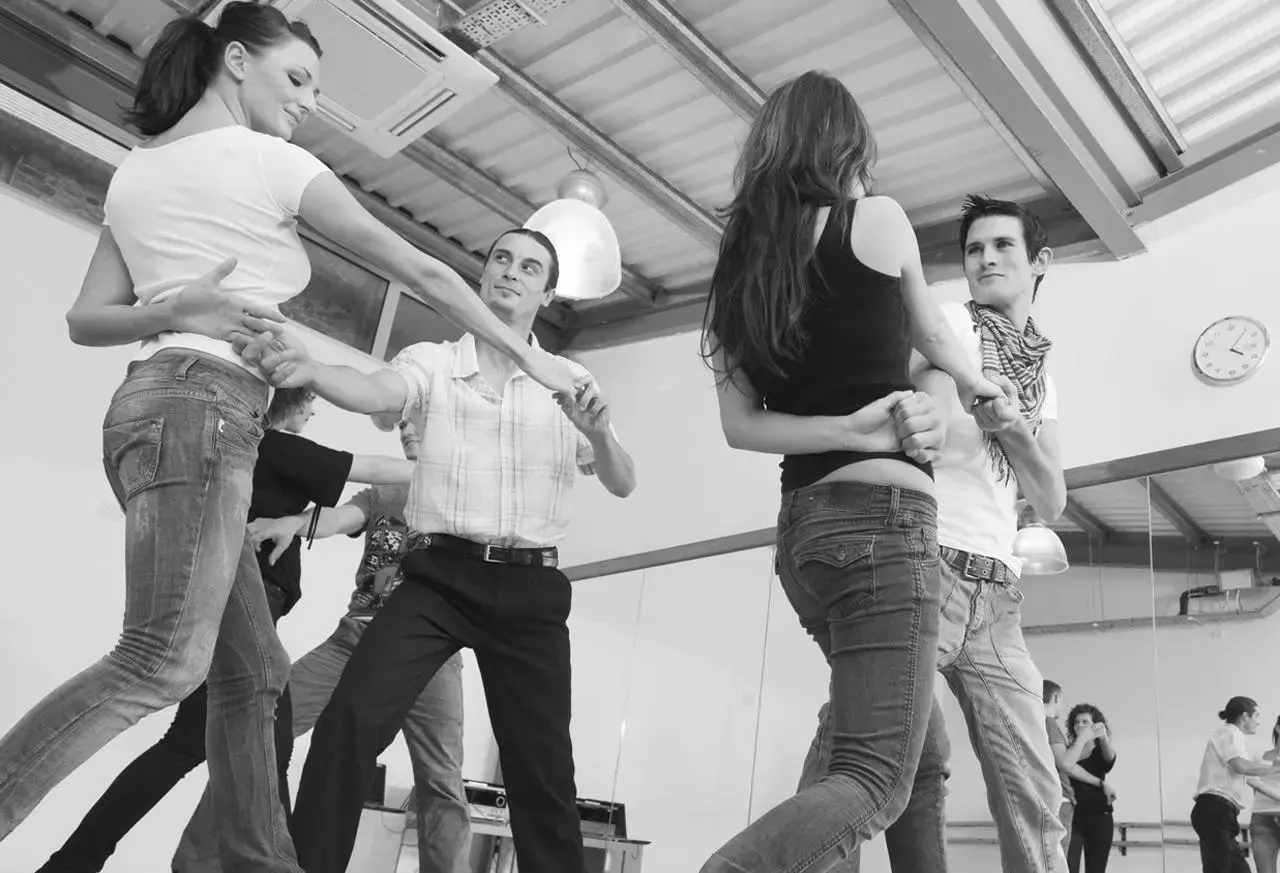
Create your dance profile on Lets-Dance
Dancewear, shoes & accessories
Register your dance school
Popular blog posts about dancing
